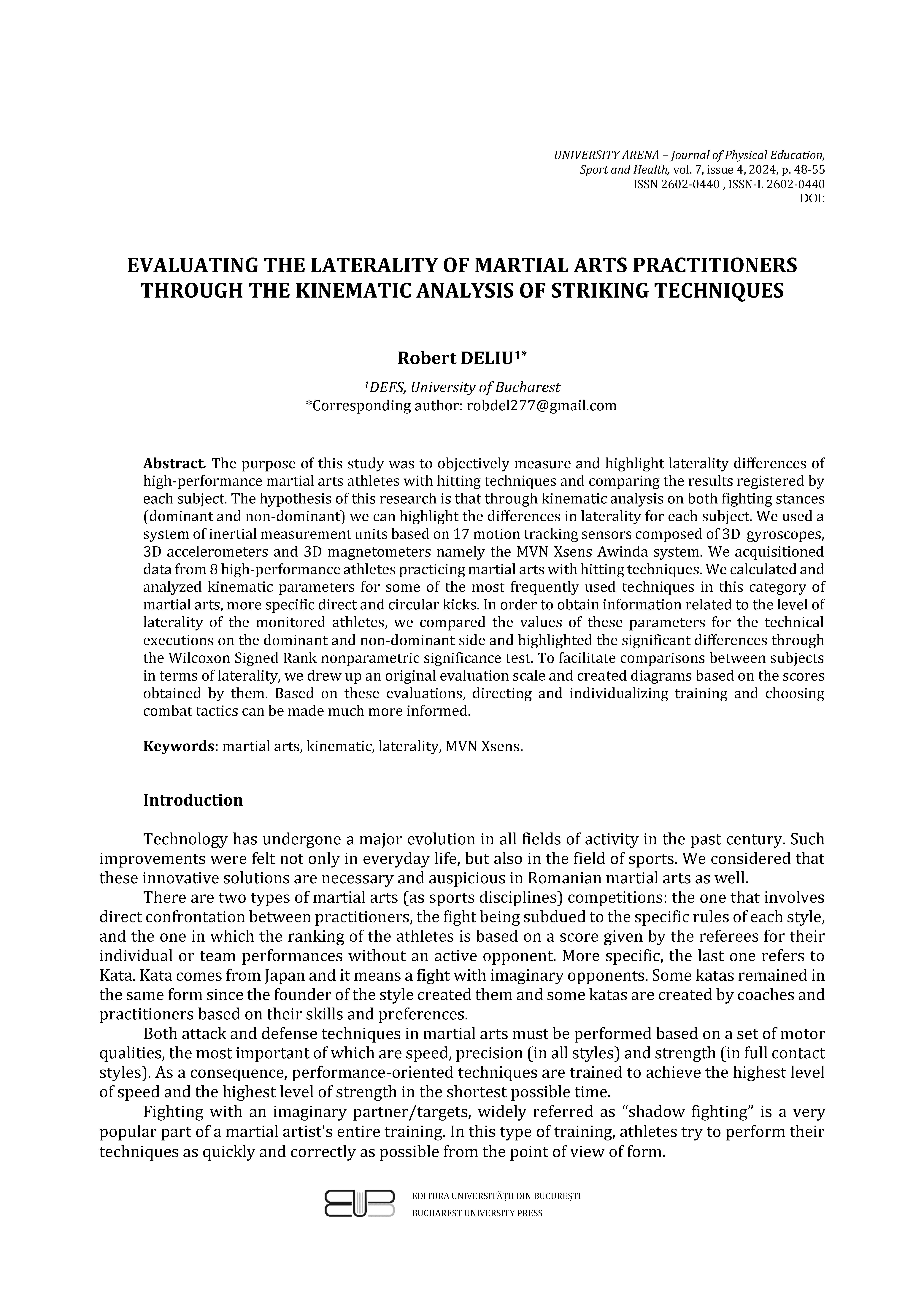EVALUATING THE LATERALITY OF MARTIAL ARTS PRACTITIONERS THROUGH THE KINEMATIC ANALYSIS OF STRIKING TECHNIQUES
DOI:
https://doi.org/10.62229/UaVii_4_24-7Keywords:
martial arts, kinematic, laterality, MVN XsensAbstract
The purpose of this study was to objectively measure and highlight laterality differences of high-performance martial arts athletes with hitting techniques and comparing the results registered by each subject. The hypothesis of this research is that through kinematic analysis on both fighting stances (dominant and non-dominant) we can highlight the differences in laterality for each subject. We used a system of inertial measurement units based on 17 motion tracking sensors composed of 3D gyroscopes, 3D accelerometers and 3D magnetometers namely the MVN Xsens Awinda system. We acquisitioned data from 8 high-performance athletes practicing martial arts with hitting techniques. We calculated and analyzed kinematic parameters for some of the most frequently used techniques in this category of martial arts, more specific direct and circular kicks. In order to obtain information related to the level of laterality of the monitored athletes, we compared the values of these parameters for the technical
executions on the dominant and non-dominant side and highlighted the significant differences through the Wilcoxon Signed Rank nonparametric significance test. To facilitate comparisons between subjects in terms of laterality, we drew up an original evaluation scale and created diagrams based on the scores obtained by them. Based on these evaluations, directing and individualizing training and choosing combat tactics can be made much more informed.


